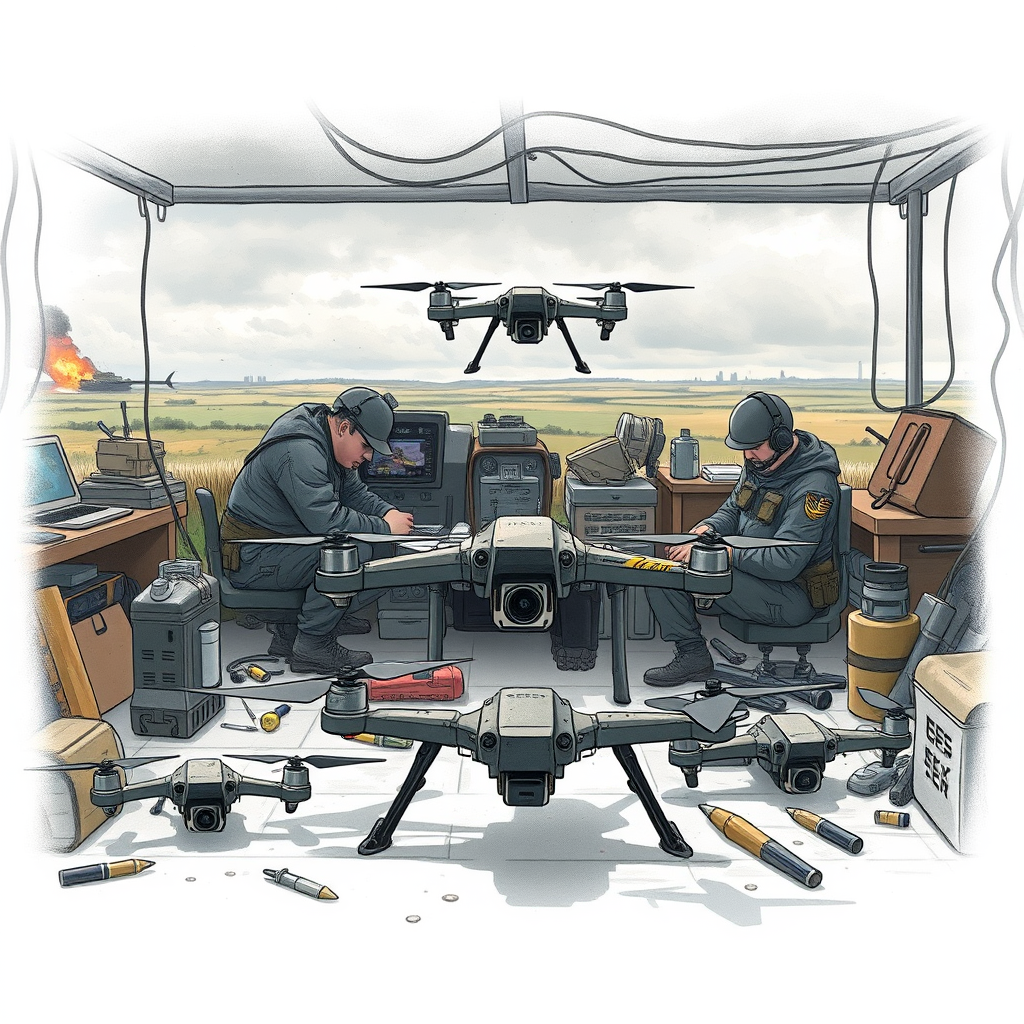Ukraine’s War Reveals Future of Military Tech

The war in Ukraine isn’t simply a geopolitical conflict; it’s a real-time laboratory for the future of warfare, and the United States is dangerously slow to fully capitalize on the lessons being learned. A recent firsthand observation of Ukrainian drone operations reveals a level of innovation and rapid adaptation that dwarfs current U.S. defense capabilities. What appears to be a scrappy, almost amateur operation – garage-based drone manufacturing turning out thousands of units daily – is, in reality, a glimpse into the future of conflict, one dominated by autonomous systems and rapid technological iteration.
Ukraine’s ability to build, deploy, and refine drone technology at an astonishing pace highlights the shortcomings of the U.S. defense industrial complex. While initiatives like the Replicator Initiative aim to accelerate the delivery of autonomous systems, they are operating on a timescale that is simply too slow to keep pace with the battlefield realities in Ukraine – and the learning curve of U.S. adversaries. The fact that Ukrainian-produced drones often outperform those supplied by the U.S. and its allies is a stark indictment of our current approach.
Beyond the immediate tactical advantages, the conflict is revealing crucial insights into countering drone technology, navigating the evolving electromagnetic spectrum, and integrating AI with battlefield operations. This isn’t just about drones; it’s about a fundamental shift in the nature of warfare.
The stakes are considerably higher than upholding a rules-based international order or even maintaining alliances, though those are important. Russia’s collaboration with Iran, North Korea, and, most significantly, China, demonstrates a coordinated effort to challenge U.S. dominance in emerging technologies. China, in particular, is actively studying the conflict to accelerate its own development of autonomous systems and countermeasures. To ignore this is to invite strategic disadvantage.
The U.S. has historically responded to threats after suffering initial setbacks. This reactive approach is a luxury we can no longer afford. Fortunately, Ukraine offers a unique opportunity to learn in real-time, with Ukrainian officials explicitly offering to share their hard-won lessons. Accepting this offer isn’t simply a matter of reciprocity; it’s a matter of national security. The U.S. must prioritize gathering intelligence from the Ukrainian battlefield, accelerating technology transfer, and adapting its defense strategies accordingly. The future of warfare is being forged in Ukraine, and the U.S. risks being left behind if it doesn’t act decisively now.